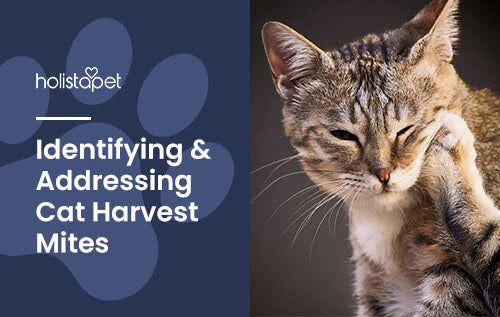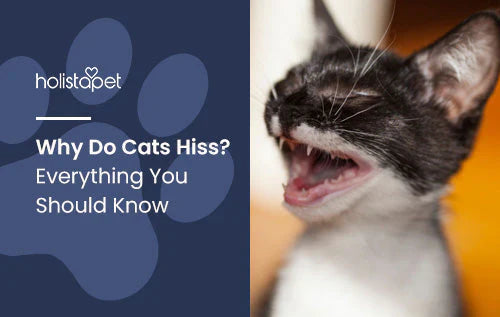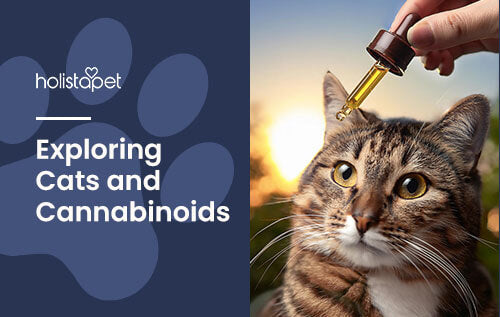Ever seen your cat suddenly start scratching like they're auditioning for a dance competition? Harvest mites on cats might be the reason behind that unexpected show!
These tiny troublemakers make their grand entrance during late summer, causing itchy chaos for our furry friends. If your cat loves outdoor adventures, they might be at higher risk for these pesky orange invaders.
What Are Harvest Mites?

Harvest mites, also known as chiggers, are tiny orangish bugs that can make your cat's life itchier than a wool sweater party! Found mainly in the late summer and early autumn, they are infamous for their sneaky behavior.
During their larval stage, they latch onto warm-blooded animals. The larvae feed on skin cells, causing intense irritation. Adult harvest mites feed on plant matter and don't bite humans or animals.
Where Do Harvest Mites Come From?
Harvest mites are nature's tiny pranksters, commonly found lurking in berry patches, pine straw, and long grass. These berry bugs thrive in warm, humid environments, waiting for the perfect moment to hitch a ride on warm-blooded animals. Late summer and early autumn are prime seasons for these miniature mischief-makers.
Why Are Cats Prone to Harvest Mites?
With their curious nature and love for exploring, cats are magnets for harvest mites. Their adventures through tall grass, berry patches, and infested vegetation put them right in the path of these tiny troublemakers. A cat's warm body provides the ideal spot for harvest mite larvae to latch on and snack during harvest mite season.
How Harvest Mites Affect Cats

Harvest mites on cats can turn their peaceful days into a whirlwind of scratching and agitation. These mites bite and latch onto a cat's skin, causing intense itching and irritation. This discomfort often leads to self-inflicted wounds. Understanding how these tiny pests affect your kitty helps you know what signs to look for and what to do next.
Possible Impact on a Cat's Health and Behavior
A harvest mite infestation can lead to some unwelcome changes in your feline friend's health and behavior. You might notice:
- Intense Itching
- Hair Loss
- Skin Irritation
- Agitation
- Self-Trauma Like Open Wounds
Potential Complications Arising From Untreated Infestations
If harvest mites in cats go unchecked, it can lead to more serious issues. Potential complications include:
- Skin Infections
- Severe Hair Loss
- Chronic Skin Irritation
- Behavioral Changes Like Agitation and Uneasiness
- Secondary Infections
Common Signs and Symptoms of Harvest Mites on Cats
Recognizing the signs of harvest mites in cats can help you get ahead of the problem. Watch out for:
- Intense Scratching
- Red, Sore Skin
- Bald Patches
- Tiny Orange Spots
- Restlessness and Agitation
How To Identify Harvest Mites on Your Cat's Skin
Due to their tiny size, identifying harvest mites on cats can be tricky. Look closely at areas like the ears, belly, and paws where these pests love to hang out.
You may spot tiny orange dots, which are the mites themselves, or notice patches of irritated skin. If your cat shows signs of intense itching and irritation, a skin scraping test by a vet can confirm the infestation.
Treatment Options for Harvest Mites on Cats
Treating harvest mite infestation is essential to bring your furry friend some relief and peace. Promptly acting can save your cat from a bunch of irritation and discomfort. Let's explore the specific solutions available to treat harvest mites.
Over-The-Counter Treatments
There are plenty of effective OTC options for treating harvest mites. Some popular ones include:
- Topical Creams
- Flea Treatments
- Preventive Treatments Like Sprays and Spot-on Treatments
- Medicated Shampoos
Natural Remedies and At-Home Solutions
For cat parents who prefer natural approaches, there are some simple at-home solutions to treat harvest mites:
- Soothing Oatmeal Baths
- Calming Apple Cider Vinegar Rinse
- Moisturizing Coconut OilCooling Aloe Vera Gel
- Regular Brushing
Can CBD Oil Help Cats Recover From Harvest Mites?

While CBD (cannabidiol) oil isn't a cure for harvest mites, it can help soothe the discomfort and irritation they cause. HolistaPet's Cat CBD Oil promotes relaxation and potentially reduces agitation from itching.
Our CBD oil features broad-spectrum oil and hemp seed oil, supporting healthy skin and promoting calm and relaxed behavior. Available in various strengths and flavors like Chicken and Salmon, it's a tasty addition to your kitty's routine.
We also offer CBD Crunchy Treats, Soft Chews, and Capsules for even more options to keep your feline friend comfy and relaxed. Check out our shop today!
View all Holistapet CBD for Cats Options Here.
Preventing Harvest Mites on Cats
Keeping harvest mites away from your cat can save both of you a lot of stress. Here are some easy ways to prevent infestations:
- Keep Grass Short
- Limit Outdoor Time, Especially During Harvest Mite Season
- Groom Regularly To Catch and Scrub Itch Mites
- Use Preventive Treatments Like Sprays and Spot-on Treatments
- Inspect Your Cat After Outdoor Adventures
Best Practices for Reducing Exposure
Reducing exposure to harvest mites on cats can make a big difference in your feline friend's comfort level. Here's how to help:
- Keep Cats Indoors During Peak Seasons
- Avoid Berry Areas and Pine Straw
- Maintain a Clean Yard
- Wash Bedding Frequently
- Use Protective Barriers Like Cone Collars To Prevent Scratching
Maintaining Your Cat's Health To Prevent Infestations
Keeping your cat healthy plays a huge role in preventing harvest mite infestations. A well-groomed, robust cat is less likely to be a victim of those tiny invaders. Regular brushing helps remove those orange mites before they settle.
A balanced diet also supports their immune system, which helps fight off skin irritants. So, don't neglect proper nutrition. Making sure your cat is stress-free and well-cared for will keep its skin resilient and less inviting for mites.
When To Consult a Veterinarian
If your cat's itching turns into persistent discomfort or you notice signs like open sores or fur loss, it's time to call the vet. Severe cases of harvest mites on cats may need professional care to prevent infections and further complications.
Your vet might recommend treatments or perform skin scraping tests to confirm the presence of mites. Don't wait too long! Early intervention can make all the difference for your kitty's comfort and health.
Final Thoughts - Harvest Mites and Cats
Harvest mites can be a real nuisance to cats, but with the right care and preventive measures, you can keep your kitty happy and comfy any time of the year. Regular grooming, checking for signs, and using effective treatments will keep them in the clear.
Don't forget that HolistaPet offers top-notch CBD products for cats that can soothe your furry buddy's irritation and support their overall well-being. Keeping your kitty safe and relaxed is always worth the effort!







![Probiotics For Dogs [Soft Chews] - HolistaPet](http://www.holistapet.com/cdn/shop/files/Probiotic-Infographic-1_472d7a29-e30c-435a-9638-1365d8c3a9f9.jpg?v=1725384841&width=104)



























Leave a comment
All comments are moderated before being published.
This site is protected by hCaptcha and the hCaptcha Privacy Policy and Terms of Service apply.